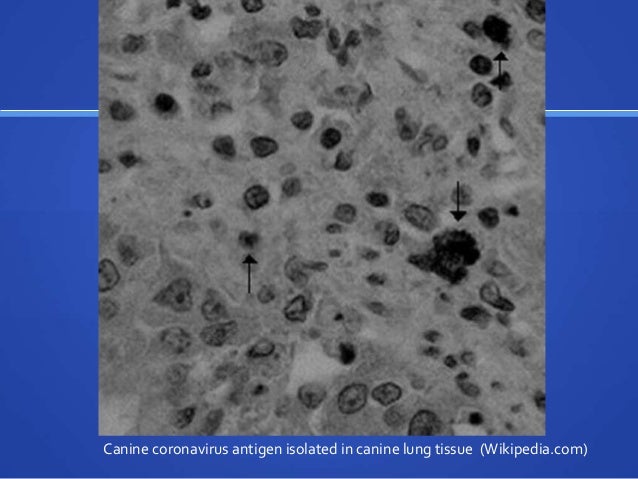CANINE CORONAVIRUS PATHOGENESIS
A canine coronavirus infection (CCV) is a highly contagious intestinal disease that can be found in dogs all around the world. This particular virus is specific to dogs, both wild and domestic. The coronavirus replicates itself inside the small intestine and is limited to the upper two-thirds of the small intestine and local lymph nodes. The much publicized human coronavirus discovered in 2003, SARS-CoV which causes severe acute respiratory syndrome (SARS), has a unique pathogenesis because it causes both upper and lower respiratory tract infections. Canine coronavirus is a highly contagious viral disease affecting the small intestine of dogs. Puppies younger than six weeks are especially vulnerable. The virus invades and replicates in the villi, small fingerlike extensions that come out from the wall of the small intestine.
A third canine coronavirus, CRCoV, detected in the respiratory tract, has 96.0 amino acid (aa) conservation in the spike (S) protein with bovine coronavirus within group 2 coronaviruses, which provides strong evidence for a recent host-species shift. Coronavirus infection in dogs is usually restricted to the enteric tract. Canine enteric coronavirus (CCoV) is a common infection of dogs, particularly those housed in large groups such as kennels, shelters, and breeding facilities. CCoV belongs to the family Coronaviridae , order Nidovirales , and was first recognized as a pathogen of dogs following virus isolation of the prototype virus in 1971 during an outbreak of gastroenteritis in military dogs [ 1 ].
With the exception of infectious bronchitis virus (IBV), which causes avian infectious bronchitis in chickens , canine respiratory coronavirus (CRCoV), which causes respiratory disease in dogs , and mouse hepatitis virus (MHV), which can cause a progressive demyelinating encephalitis in mice 3, 8, other CoV infections typically result in gastrointestinal symptoms. Enteric canine coronavirus infection is common in dogs worldwide, and putative instances of coronavirus enteritis have also been recorded in wild dogs. Similar or identical alphacoronaviruses have been identified in foxes, raccoon dogs (Nyctereutes procyonoides), and cats.
The intestinal disease caused by canine coronavirus is similar to that caused by enteric coronaviruses in other species (see porcine transmissible gastroenteritis virus), with destruction of mature enterocytes lining the Etiology and Pathophysiology: Canine parvovirus (CPV) is a highly contagious and relatively common cause of acute, infectious GI illness in young dogs. Although its exact origin is unknown, it is believed to have arisen from feline panleukopenia virus or a related parvovirus of nondomestic animals. There is no vaccine for coronavirus. To help prevent coronavirus infection, do the same things you do to avoid the common cold: Wash your hands thoroughly with soap and warm water or with an alcohol-based hand sanitizer. Keep your hands and fingers away from your eyes, nose, and mouth. Canine coronavirus is a virus of the family Coronaviridae that causes a highly contagious intestinal disease worldwide in dogs.
It was discovered in 1971 in Germany during an outbreak in sentry dogs.
